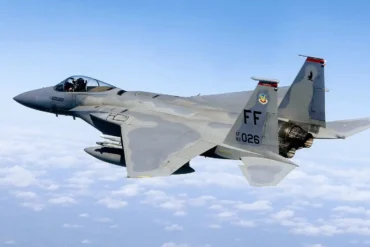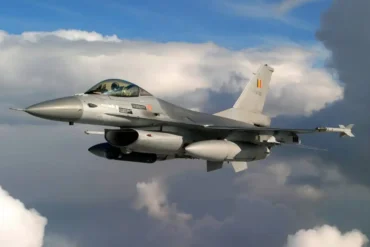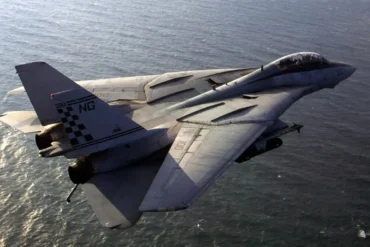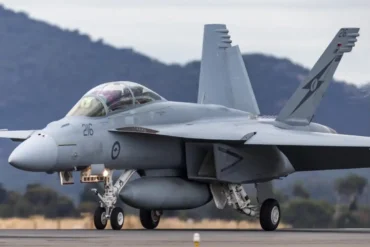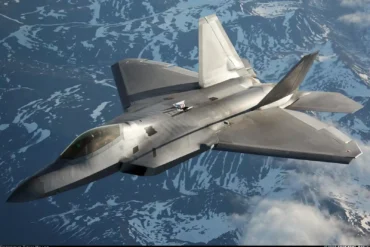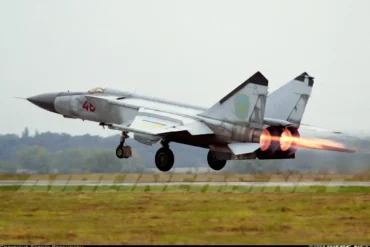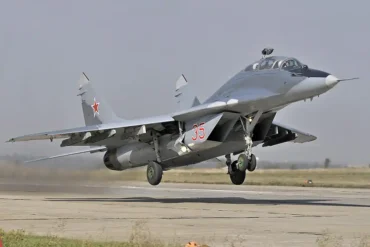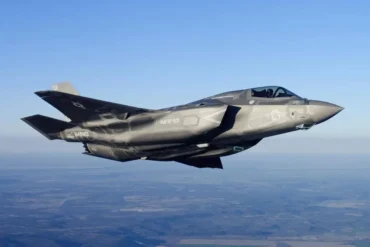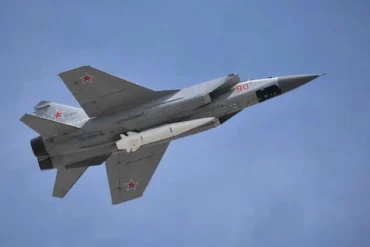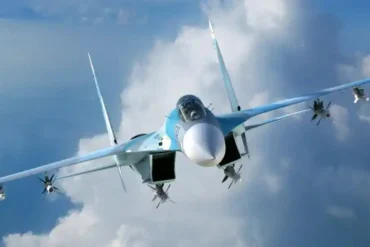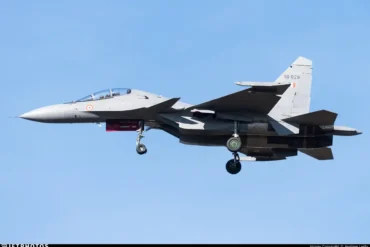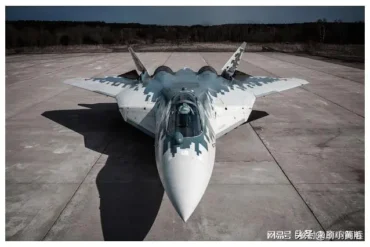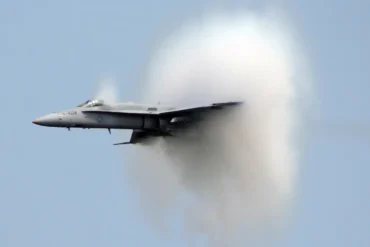The Su-35 is a multi-role, highly maneuverable, and advanced 4++ generation fighter aircraft developed by Sukhoi, a renowned Russian aerospace company. Over the years, this exceptional aircraft has captured the attention of aviation enthusiasts, military analysts, and defense professionals alike, thanks to its advanced capabilities, powerful performance, and groundbreaking technologies. From its super-maneuverability to its advanced radar systems, the Su-35 is a true marvel of engineering that pushes the boundaries of what modern fighter jets are capable of.
In this article, we will delve into some fascinating facts about the Su-35, its unique features, its role in modern warfare, and its status in the global defense market.
1. Unmatched Super Maneuverability: The “Physics-Defying” Capabilities of the Su-35
One of the most striking features of the Su-35 is its superior maneuverability. This is largely attributed to its AL-41F1S engines, which are equipped with thrust vectoring nozzles. These engines enable the Su-35 to perform extraordinary maneuvers, including the Cobra maneuver and the Pugachev’s Cobra. These maneuvers involve extreme angles of attack, which often seem to defy the laws of physics.
During the 2017 Moscow Airshow, the Su-35’s performance was described as “violating the laws of physics” by spectators. This jet is capable of executing complex aerial stunts at low speeds, allowing it to evade enemy missiles or close in on targets in ways that few other fighter jets can match. The aircraft’s vectored thrust allows it to change direction rapidly, making it a deadly opponent in dogfights.
One popular online comment from the airshow humorously stated, “After completing its maneuvers, it runs out of fuel, and then it’s easy to shoot down.” While this is clearly a lighthearted remark, it underscores the aerial prowess of the Su-35 and its capabilities in combat scenarios.
2. Advanced Radar Technology: A Range of 400 Kilometers
The Su-35 is equipped with the “Snow Leopard-E” radar, a passive phased array radar that boasts an impressive detection range of up to 400 kilometers. This cutting-edge radar can detect a 1-square-meter target at incredible distances, providing the Su-35 with a significant advantage in tracking and engaging both airborne and ground targets.
One of the most remarkable features of the Su-35’s radar system is its ability to track multiple targets simultaneously. In addition to scanning the airspace, the radar can simultaneously track ground targets, allowing the Su-35 to perform multiple roles during combat missions, such as air superiority and ground attack. This dual capability makes the Su-35 an exceptional asset in modern warfare.
However, this radar system is not without its limitations. Its performance can be affected by electronic warfare and jamming, which may reduce its effectiveness in some operational environments. Nevertheless, its sheer range and versatility make it one of the most advanced radar systems on any fighter jet in the world today.
3. Stealth Design: The Controversy of the “Radar Reflector”
While the Su-35 features some stealth technology, such as composite materials designed to reduce its radar cross-section (RCS), it is not a true stealth aircraft like the F-35 or F-22. The aircraft’s canard design (also known as duck wings) has been humorously referred to as a “radar reflector” by some observers. This design results in a higher RCS, estimated to be around 10 square meters, which is a significant difference compared to the F-35’s 0.1 square meters.
Critics argue that the Su-35’s stealth capabilities are limited, and its design choices—such as the canards and wing shape—actually increase its radar signature. However, it’s important to note that the Su-35 was not designed with stealth as its primary focus. Instead, its performance emphasizes superior maneuverability and advanced sensors to overcome adversaries in combat situations.
4. Mixed Performance in Real Combat: A Tale of Two Outcomes
In real combat scenarios, the Su-35 has experienced a mix of successes and challenges. During the ongoing Russia-Ukraine conflict, the Su-35 has been both a formidable presence in the skies and a target for enemy aircraft. While it has been involved in numerous air superiority missions, it has also faced setbacks. Notably, one of the Su-35s was shot down by a Ukrainian MiG-29, with the likely cause being the aircraft’s low-altitude bombing runs, which made it vulnerable to enemy fire.
On the other hand, the Su-35 has proven to be a powerful deterrent with its long-range air-to-air missiles, including the R-37M missile, which is capable of striking targets at a range of up to 300 kilometers. This missile has earned praise for its exceptional performance, with some Ukrainian sources admitting that they are unable to match its range with the F-16 or other Western jets.
The mixed record of the Su-35 highlights the complex nature of modern air combat, where even the most advanced fighters face challenges in real-world scenarios.
5. The $20 Billion Deal: China’s Strategic Investment in the Su-35
In 2015, China made a $20 billion investment in the Su-35, purchasing 24 units at an approximate price of $83 million per jet. This deal was controversial at the time, especially since China was already in the process of developing its own J-20 stealth fighter. Despite this, the Su-35 provided China with a valuable opportunity to acquire advanced Russian technology, particularly the thrust-vectoring engines that could benefit their domestic aircraft programs.
The Su-35’s purchase was also strategically significant, as it enabled China to bolster its military presence in the South China Sea, where it could deploy the aircraft for various operational needs. Additionally, the Su-35 serves as a means to strengthen Sino-Russian military ties, reflecting the growing defense cooperation between the two countries.
6. The Su-35’s Reputation Among the U.S. Military: A “Mini AWACS”
After conducting simulated confrontations with the Su-35, the U.S. military praised the aircraft for its radar and maneuvering capabilities, even going so far as to refer to it as a “mini AWACS” (Airborne Warning and Control System). This is a testament to the Su-35’s data-link systems, which enable it to integrate information from various sensors and share it with other aircraft on the battlefield. These features allow the Su-35 to coordinate with other assets in a way that is more commonly associated with fifth-generation fighters.
The aircraft’s ability to act as a command-and-control platform during air operations is a significant asset in modern warfare. This capability allows the Su-35 to effectively contribute to multi-domain operations, making it a highly versatile and effective fighter.
7. The Su-35’s Innovative “Speed Brake Disappearance”
In a departure from conventional designs, the Su-35 does not rely on traditional speed brakes to decelerate. Instead, the aircraft uses its fly-by-wire control system to coordinate the deployment of flaps, rudders, and thrust-vectoring nozzles to achieve controlled deceleration. This unique design significantly reduces the aircraft’s structural complexity while still achieving highly effective aerodynamic braking.
This innovation also places higher demands on the aircraft’s fly-by-wire software and flight control systems, ensuring that the aircraft can decelerate rapidly without compromising its maneuverability or aerial performance.
8. The Su-35’s Export Market: Challenges and Opportunities
Initially hailed as a potential export powerhouse, the Su-35 has encountered numerous political and economic challenges in the global arms market. While the aircraft was initially sought after by various countries, including Egypt and Indonesia, many of these deals were canceled due to sanctions and political factors.
However, the Iranian military became one of the few buyers of the Su-35 in recent years, signing a deal in 2023 for the purchase of several units. Despite these setbacks, the Su-35 remains a highly respected aircraft in international defense circles, known for its performance and value for money in comparison to similar Western aircraft.
Conclusion: The Su-35’s Enduring Legacy
The Su-35 is a remarkable example of modern aerospace engineering, blending advanced technologies with incredible maneuverability and strategic versatility. While it may not be a true stealth fighter, its capabilities in aerial combat, radar systems, and electronic warfare make it a formidable opponent in the skies. As it continues to serve in multiple air forces worldwide, the Su-35 will undoubtedly maintain its reputation as one of the most advanced and capable fighter jets of its generation.
For defense professionals, aviation enthusiasts, and military strategists, the Su-35 stands as a testament to Russia’s engineering excellence and the future of air superiority.

